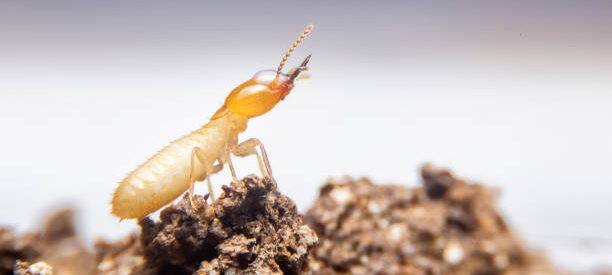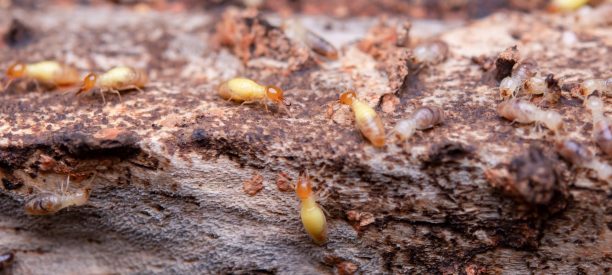About Benchmark
Benchmark Pest Control & Cleaning Services a Limited Liability Company based in Dubai specialized in a variety of General Contract Pest Control Jobs.
Benchmark Pest Control & Cleaning Services © 2022 All Right Reserved
Termites are among the most destructive pests affecting properties in the UAE. Their ability to damage wooden structures, furniture and even building foundations silently makes them a serious threat for homeowners and business owners alike. Understanding termite colonies: how they operate and spread rapidly is essential to preventing large-scale infestations and avoiding costly repairs.
In this blog, we will explore the structure and behavior of termite colonies, the methods they use to spread, early warning signs of infestation and effective preventive measures. Additionally, we will discuss the crucial role of professional pest control services in managing and eliminating termite problems. By the end of this, you will have practical insights to protect your residential or commercial property in Dubai and across the UAE.
A termite colony is a large, structured group of termites that live and work together like a single, living system. It’s not just a gathering of insects it’s an organized society where every termite has a purpose, and the entire group functions like a superorganism.
The queen is the reproductive powerhouse of the colony. They can live for several years and lay thousands of eggs daily, ensuring the colony continues to grow.
The king assists the queen in reproduction and helps maintain the stability of the colony.
These are the laborers of the colony. They build tunnels, gather food and feed other termites, including soldiers, queens and developing larvae.
The protectors of the colony, soldiers defend against predators and other threats.
These are reproductive termites that leave the colony during swarming season to establish new colonies in different locations.
Understanding termite colonies: how they operate and spread rapidly begins with recognizing this structured system and the roles of each termite.
Termite colonies operate with a level of organization that allows them to thrive undetected for long periods.
Communication: Termites communicate through chemical signals known as pheromones and physical touch. This enables them to coordinate activities such as food gathering, nest maintenance and defense against intruders.
Food Collection: Termites feed primarily on cellulose, which is found in wood, paper and plant materials. Worker termites forage discreetly, constructing underground tunnels or hidden pathways inside wooden structures to reach food sources.
Colony Expansion: The queen continuously lays eggs, while alates leave the colony to mate and start new colonies elsewhere. This coordinated expansion allows termite populations to grow rapidly and spread across nearby properties.


Termites spread quickly, and understanding their methods is key to prevention:
Reproduction: A mature termite queen can lay up to 30,000 eggs per day, depending on the species.
Alate Swarming: Alates are winged male and female termites produced during the colony’s maturity phase.
Subterranean Expansion: Termites build underground tunnels. These tunnels are protected from sunlight, predators, and air exposure allowing them to move silently into new food sources like trees, roots, buildings, and fences.
Colony Budding: A new queen is selected within the same colony. A portion of the colony separates, creating a satellite colony nearby.
Human Help: Wood, soil, furniture, or building materials can carry termites (especially eggs or alates) it’s allowed them to spread across.
In Dubai, Sharjah and across the UAE, termite prevention is especially important due to the warm climate and prevalence of wooden interiors in both residential and commercial buildings. Effective preventive measures include:
Implementing these steps can significantly reduce the risk of termite infestation and help maintain the structural integrity of your property.
Soil Treatment: Applying liquid termiticides to the soil around a property creates a barrier that prevents termites from entering buildings.
Baiting Systems: Termite baits contain slow-acting toxins that workers carry back to the colony, effectively eliminating it over time.
Wood Treatments: Chemicals are applied directly to wooden structures to make them termite-resistant.
Monitoring and Maintenance: Professionals provide ongoing inspections and preventive measures to ensure termites do not return.
Relying on professional services ensures termite problems are addressed comprehensively and safely, protecting both residential and commercial properties.
Understanding termite colonies: how they operate and spread rapidly is vital for property owners in the UAE. Termites are highly organized pests that can cause extensive damage if left unchecked. Recognizing early warning signs, implementing preventive measures and relying on professional pest control services are the most effective ways to protect your property.
At Benchmark, we specialize in termite detection, control and prevention. Our expert team uses safe, effective methods to preventing to grow the colonies and protect your property from future infestations. We have so many proven records of the termite control services and we’re doing many termite control treatments in UAE especially in Dubai & Sharjah.
WhatsApp us